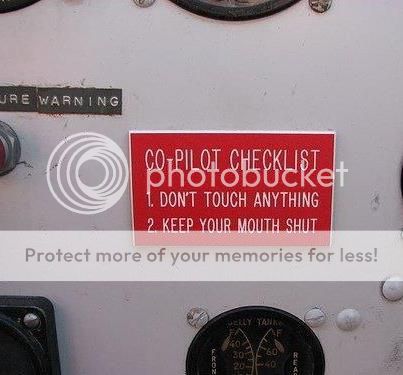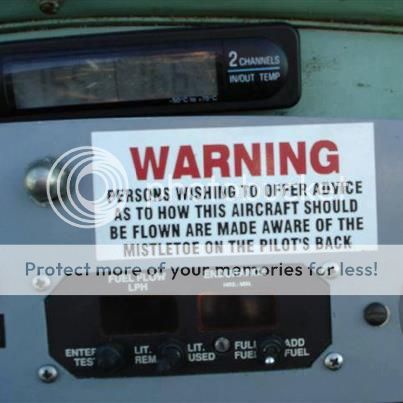RyansPlace
Filing Flight Plan
BLUF: Is a separate passenger brief required in addition to a crew brief prior to flight or can I perform a combined crew/passenger brief?
Background: I keep hearing that examiners have been emphasizing crew/passenger briefs. In the Practical Test Standards (PTS) Guide TAB B, paragraph 4 under the preflight procedures, it states "Briefs occupants on the use of safety belts, shoulder harnesses, doors, and emergency procedures." This is essentially the brief passengers receive from flight attendants on commercial airlines. I’m yet to find a task in the PTS that details requirements for a crew briefing.
I merged a few military checklists and adapted them for private use. The checklist below fulfills the PTS requirements. Could/should I use this on a check ride? What formats do you use for your briefings? I'm interested to see other checklists.
Background: I keep hearing that examiners have been emphasizing crew/passenger briefs. In the Practical Test Standards (PTS) Guide TAB B, paragraph 4 under the preflight procedures, it states "Briefs occupants on the use of safety belts, shoulder harnesses, doors, and emergency procedures." This is essentially the brief passengers receive from flight attendants on commercial airlines. I’m yet to find a task in the PTS that details requirements for a crew briefing.
I merged a few military checklists and adapted them for private use. The checklist below fulfills the PTS requirements. Could/should I use this on a check ride? What formats do you use for your briefings? I'm interested to see other checklists.
CREW/PASSENGER BRIEFING CHECKLIST
1. Flight overview.
2. Weather. (Departure, en route, destination, and alternate if required).
3. Notices to airmen (NOTAMs).
4. Flight route.
5. Refueling requirements.
6. Crew callouts, duties, and responsibilities.a. Transfer of the controls. (Three-way positive transfer. Verbal. Visual. Physical).
b. Emergency actions.7. Required items (publications, etc)
(1) Engine failure.c. Emergency and safety equipment.
(2) Fire and use of fire extinguisher
(3) Egress procedures and rendezvous point.
(4) Injured personnel removal.
(1) Wear of safety belts and shoulder harnessesd. General crew duties.
(2) Operation of doors
(3) Fire extinguisher
(1) Pilot on the controls.
(a) Fly the aircraft (primary focus outside).(2) Pilot not on the controls.
(b) Avoid traffic or obstacles.
(c) Cross-check instrument systems.
(d) Monitor and transmit on assigned radios.
(a) Avoid traffic or obstacles.(3) Crew coordination elements
(b) Operate COM/NAV systems.
(c) Navigate.
(d) Copy clearances and other information.
(e) Cross-check instrument systems.
(f) Monitor and transmit on assigned radios.
(g) Perform other duties as assigned by the P*.
(a) Communicate positively.
(b) Direct assistance.
(c) Announce actions.
(d) Offer assistance.
(e) Acknowledge actions.
(f) Be explicit.
(g) Provide aircraft control and obstacle advisories.
(h) Coordinate action sequence and timing.
8. Analysis of the aircraft.
a. Logbook and preflight deficiencies.9. Risk assessment considerations.
b. Performance planning card
(1) Takeoff landing data (TOLD).c. Flight modifications based on aircraft analysis.
(2) Required flight deviations based on aircraft performance or weather.
10. Crewmember questions, comments, and acknowledgment of the mission briefing.
Last edited:







